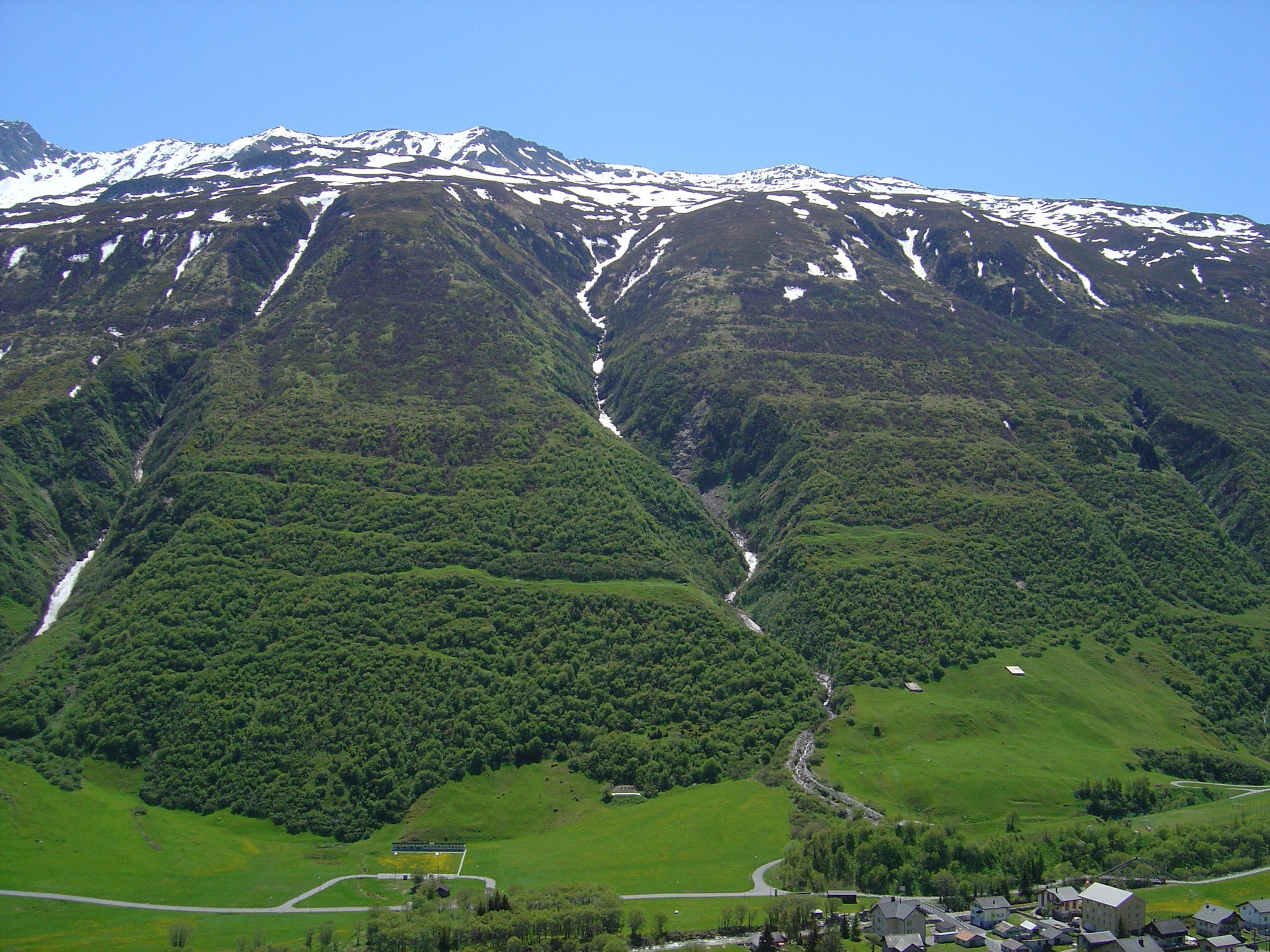Rogue native species ruins Alpine slopes

As agriculture declines in the Alps, abandoned land is being densely colonised by a native shrub, with negative ecological consequences for the landscape, water balance and biodiversity, a large-scale Swiss research project has found.
Plant ecologists, soil experts, hydrologists and economists led by Christian Körner from Basel University examined the consequences of farms being abandoned in the higher reaches of the Alpine range.
Their project, supported by the Swiss National Science Foundation (SNSF), focused on Ursern Valley near Andermatt in central Switzerland which is typical of much of the Alps. Sixty years ago, there were still more than 100 farms in the valley; now there are only 30.
“Suddenly [in evolutionary terms] within a few decades humans pull out and leave land open to invasion by a local species that is normally confined to small areas,” Körner told swissinfo.ch.
The green alder shrub, which is normally found in stream beds and avalanche paths, has now come to dominate the north-facing slopes. If this continues, the green alder will completely cover its potential habitat in the Ursern Valley by 2045, the researchers predict.
Bad influence
But this is not an exotic species – it’s local and green, so what’s the problem? “There are many problems,” Körner explained. “Those shrubs are not stabilising the slopes, they are actually making them more prone to erosion.”
The spread of the invasive shrub also affects the quality of water, contaminating it with nitrate. Where it grows, the biodiversity of plant life decreases and young conifers are not able to break through the dense undergrowth.
“Without human intervention, the forest cannot make a rapid comeback,” he explained.
Green alder also has an impact on water balance. Surfaces covered by the shrub or long, ungrazed grass release between 10 and 20 per cent more moisture into the air than grassland on which animals graze.
This evaporation means less run-off in the summer and is significant enough to have an impact on hydro-electric power production.
An extrapolation of the volume of evaporated water for the entire Ursern Valley suggests that power plants will in future lose between six and 11 gigawatt hours of energy corresponding to between SFr500,000 ($550,000) and SFr1 million a year, depending on the weather.

More
Why Swiss forests no longer need rescuing
Four legs good
The loss of the land as an amenity is also a factor. “People prize the Alps compared to other mountain areas as an open landscape interspersed with forests and beautiful meadows. Now it’s just green bush. You cannot pass through even with a machete,” Körner said.
It cannot be used for agriculture either as animals don’t go into the thickets once they’re fully established – with one intrepid exception.
The Engadine sheep, a hardy brown species recently saved from extinction, is the natural enemy of the alder. Unlike the hybrid sheep favoured in the Alps, the Engadine feed on the stems of alder bushes. As part of the project, the researchers led some up onto the affected pastures.
Körner described the scene when the flock borrowed from a valley near Basel arrived in the Alps. “For the first time in their lives they saw the mountains. We opened the truck and they immediately ran to the bushes and started to peel them.”
“Now we have a good stock of flocks that are ready to go back to the mountains. If you bring that sheep in early just when the bush is starting to establish, they can do the job in a season,” he added.
Inaction is the worst option, according to Körner. “It would be a great advantage if the stakeholders decided. Either they want a forest in which case they clear the bush and have a forest, or if they decide they want to retain the pastures then we go for the sheep that keep the land open.”
The picturesque Ursern Valley near Andermatt is in many ways a typical high mountain valley in the Alps.
The first inhabitants arrived here around 800 years ago and turned patches of forest into open cultivated land where goats, sheep or cows were able to graze.
The sustainable alpine farming that followed for hundreds of years is now on the decline.
Many of the less accessible pastures on the mountain slopes were abandoned and are now densely covered by alder shrubs.
(Source: Unsern Valley research project)

In compliance with the JTI standards
More: SWI swissinfo.ch certified by the Journalism Trust Initiative
You can find an overview of ongoing debates with our journalists here. Please join us!
If you want to start a conversation about a topic raised in this article or want to report factual errors, email us at english@swissinfo.ch.